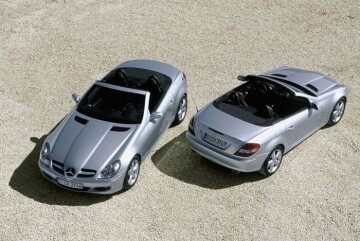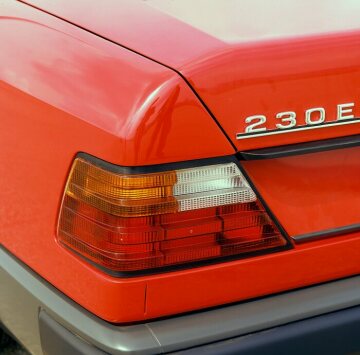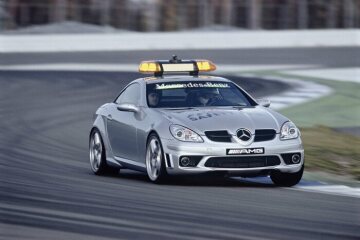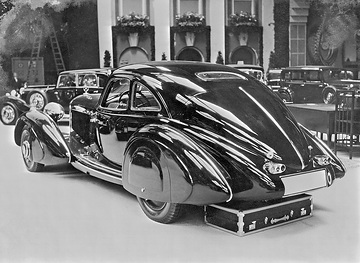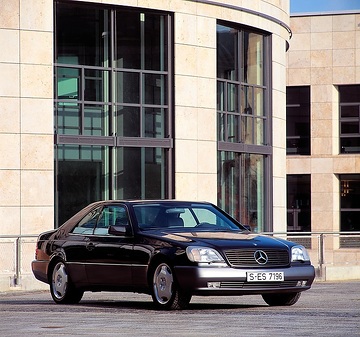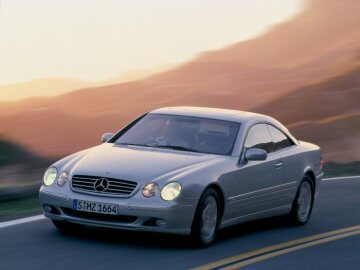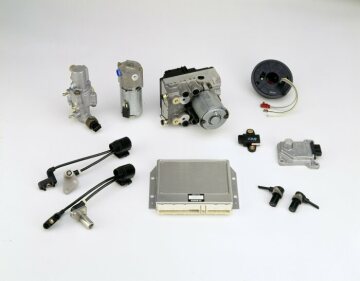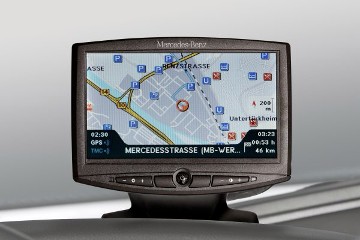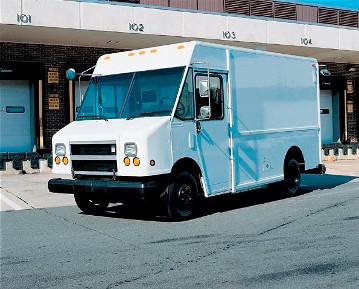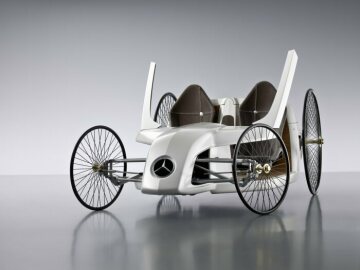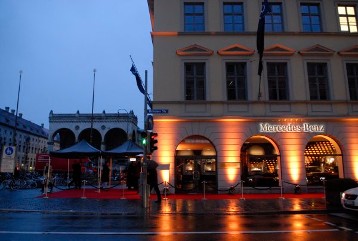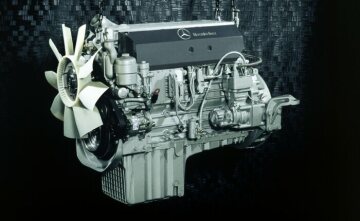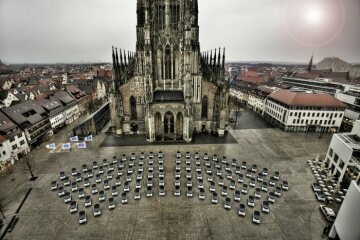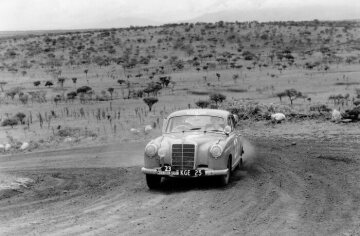March
Download
Please wait a moment ...
Download
Please wait a moment ...
Delete
Do you really want to delete the data record?
Download
Please wait a moment ...
Download
Please wait a moment ...
Download
Please wait a moment ...
Crop for shopping cart
Please wait a moment ...
Set as main picture
Do you want to set this media object as main picture?
-
1 March 1939
-
Colonel Adolf von Schell, Executive for Motorised Transport, presents a plan to reorganise the German motor vehicle model programme. The aim is to reduce the number of models sharply and distribute them among individual manufacturers. The Schell Programme, adopted by decree on 2 March, reduces the number of car models from 52 to 30 and the number of truck models from 133 to 21. It is to take effect on 1 January 1940.

-
1 March 1999
-
The 100,000th M-Class is completed at the production plant in Tuscaloosa, Alabama/USA. On 9 March the successful Mercedes-Benz model series is presented with the coveted "World Car Award" at the Geneva Motor Show, recognising it as the vehicle best equipped to deal with driving conditions on all five inhabited continents of the Earth.

-
3 March 1999
-
The wholly-owned Daimler-Benz subsidiary Freightliner Corp. and the British Mayflower Corp. sign a letter of intent to set up a joint venture. It will bring together the Freightliner subsidiary Thomas Built Buses and Mayflower subsidiaries Walter Alexander and Dennis Bus and Coach with a view to manufacturing low-floor buses of lightweight design for local public transportation and selling them throughout North America.

-
4 March 1994
-
In the Eco-Sprinter and Eco-Speedster, Mercedes-Benz presents to the press two near-series studies of the Micro Compact Car that will come on the market four years later under the name smart. Mercedes also outlines the use of alternative drive systems, including an electrically powered version with sodium-nickel chloride battery and a hybrid variant with a combination of diesel engine and electric motor.

-
4 - 14 March 2004
-
Mercedes-Benz unveils the R 171 series roadsters to the public at the Geneva Motor Show. This is the second-generation version of the globally successful SLK. The 265 kW / 360 hp SLK 55 AMG expands the model range of the SLK-Class with the first addition of a V8 model. The innovative AIRSCARF neck-level heating system also makes open-top driving possible even when the outdoor temperature drops. The production version of the CLS (C 219 series) and the revised 203-series C-Class model range also celebrate their world premiere. New top-of-the-range C-Class model is the 270 kW / 367 hp C 55 AMG. Another new product is the G 55 AMG, which has been given a supercharged engine with 350 kW / 476 hp so that it has appreciably better performance than the previous model of the same name.

-
4 - 26 March 2009
-
At a press trial drive event for the new E-Class in Madrid, Mercedes-Benz also presents the special-protection variant of the 212 series. The new Guard model, which can be ordered from 31 March, marks the continuation of eight decades of expertise at in developing and building special-protection vehicles.

-
5 March 1959
-
Daimler-Benz presents three truck models in the new semi-forward control vehicle design to the press in Stuttgart: in the medium-duty class the L 322 and the L 327 export model from Mannheim production, and the heavy-duty L 337 built in Gaggenau. This marks the beginning of a drive to phase out the traditional truck design. As with the outgoing models, a cab-over-engine variant is also available for each model.

-
5 - 15 March 2009
-
The E-Class of the 212 series celebrates its motor show premiere at the Geneva Motor Show. Making its debut there at the same time is the E-Class Coupé (207 series), which melds the virtues of the saloon with the fascination and elegance of a coupé. A new highlight in the range of luxury saloons under the Maybach brand is also introduced in the form of the Maybach Zeppelin. This car, production of which is limited to 100 models, takes the absolute top spot in the high-end luxury saloon category. Two smart models also celebrate their world premiere in Geneva: the near-series fortwo BRABUS electric drive show car, featuring a lithium-ion battery, and the "edition limited three" special model based on the smart fortwo mhd passion.

-
7 March 1984
-
At the Sindelfingen plant, Dr Rudolf Eberle, Baden-Württemberg's Minister of Economic Affairs, takes delivery of three Mercedes-Benz 230 E passenger cars fitted with closed-loop catalytic converters and designed to run on premium petrol. The cars will be used in a pioneering model test conducted by the state government, in which two identical vehicles without catalytic converter also participate for the purpose of comparison.


-
8 - 18 March 1934
-
Two new designs from Daimler-Benz make their debuts at the Berlin Motor Show: the 130 (W 23) is the first series-produced Mercedes-Benz passenger car with a rear-mounted engine and appears as the new entry-level model in the passenger car range; and the supercharged 500 model, also abbreviated to the 500 K (W 29) is fitted with a 5-litre eight-cylinder supercharged engine and replaces the 380 model. The new sports car model goes on display in Berlin as the so-called Autobahn-Kurierwagen (autobahn courier) designed "for particularly high speeds". The Nürburg 500 (W 08) is presented in slightly modified form under the new designation Mercedes-Benz 500 or 500 N.

-
9 - 19 March 1989
-
The new R 129 Roadster series, featuring the 300 SL, 300 SL-24 and 500 SL models, celebrates its world premiere at the Geneva Motor Show. The most important innovations are the electro-hydraulically operated top, the roll-over bar that extends automatically if the car threatens to overturn, and the integral seat. The new SL models are the first Mercedes-Benz production cars equipped with four-valve six-cylinder and eight-cylinder engines. The 300 SL-24 has the 162 kW / 220 hp 3-liter in-line six-cylinder M 104 unit, and the 500 SL has the 5-litreV8 M 119 with 240 kW / 326 hp. The sporty 190 E 2.5-16 Evolution (201 series) is also premiered. To homologate the Group A racing touring car it will be produced in a 500-unit limited edition and made available from the end of March.


-
10 - 20 March 1994
-
The stylistically and technically refined 140 series S-Class saloons are presented at the Geneva Motor Show. The S 420 Coupé also celebrates its world premiere, adding a third model to the range of S-Class coupés. Two debuts are made in the E-Class (124 series): the E 200 Convertible and the highly exclusive 500-unit special edition E 500 Limited model.

-
11 March 1944
-
The Reich Ministry of Aviation decides to relocate the Genshagen aeroengine factory to a gypsum mine near Obrigheim am Neckar. The measure, codenamed "Goldfish" carried out by the SS observing strictest secrecy, was the first transfer of a Daimler-Benz plant to an underground site. On 21 March 500 forced labourers begin construction work in Obrigheim.

-
11 March 1974
-
Daimler-Benz Board of Management member Prof. Hans Scherenberg accepts the "1974 Car of the Year" award on the eve of the Geneva Motor Show. An international jury made up of 45 trade journalists had in January awarded the coveted prize to the car models 450 SE and 450 SEL ( 116 series), as well as the 450 SL and 450 SLC (107 series).

-
11 March 2009
-
Daimler AG announces that, due to general economic conditions, short-time working will also be introduced at its Wörth, Gaggenau, Kassel and Mannheim truck plants from April/May. This is the company's response to the continuing low level of demand and declining order intake as a reflection of current market developments.

-
11 - 21 March 1954
-
The newly developed Mercedes-Benz 220 (internally designated 220 a, W 180) with "Ponton" body and the revised 300 (internally designated 300 b, W 186) with uprated engine make their debut at the Geneva Motor Show. The luxury model 220 a, which marks the introduction of the single-joint swing axle in passenger car construction, replaces the 220 (W 187) from 1951.

-
12 - 22 March 1964
-
A revised range of commercial vehicles is unveiled at the Geneva Motor Show. The most important new additions are the OM 352 and OM 346 diesel engines, which are the first Daimler-Benz power units to work with a direct injection system and replace the OM 322 and OM 326 pre-chamber diesel engines. The pre-combustion principle – developed at Benz & Cie. – is somewhat smoother-running and thus remains an indispensable component of diesel engines in passenger cars for decades to come. In the commercial vehicle sector, on the other hand, the direct injection concept becomes the dominant force, the many years of development work having generated significant benefits in terms of fuel consumption and mileage.

-
12 - 21 March 1999
-
The Geneva Motor Show hosts the world premiere of the new Mercedes-Benz CL Coupé from the C 215 series. It is the world's first production car to be equipped with the active suspension system Active Body Control (ABC). The top-of-the-range CL 600 debuts with the 270 kW / 367 hp 5.8-litre power plant from the new V12 M 137 series, which features three-valve technology, dual ignition and automatic cylinder shutoff (CSO). In the CLK 55 AMG, Mercedes-AMG presents an especially powerful variant of the CLK Coupé (208 series). Also having their first showing are the facelifted V-Class (638 series) and the armoured special-protection version of the S-Class. The special-protection variants of the E-Class, S-Class and G-Class bear the new designation Mercedes-Benz Guard. Micro Compact Car smart GmbH presents the diesel variant of the smart City Coupé, scheduled for launch at the end of the year.


-
15 March 1994
-
Mercedes-Benz presents the new dynamic handling control system in the Swedish town of Arjeplog. Developed in cooperation with Bosch, it celebrates its market launch a year later as the Electronic Stability Program (ESP) and represents a further milestone in the development of active safety features for cars.


-
17 March 1999
-
The A-Class-based fuel cell powered NECAR 4, which establishes a new milestone for alternative drive systems, debuts in Washington, D.C. The fuel cell system, which operates on liquefied hydrogen and has a 40 % higher capacity compared with its NECAR 3 predecessor, is completely accomodated in the underfloor of the A-Class. The vehicle attains a top speed of 145 km/h, can travel up to 450 kilometres on one tank and has space for five passengers and their luggage.



-
20 March 2004
-
The express airfreight and courier service company FedEx Express put the first of two delivery vehicles featuring a hybrid drive into regular daily use in Sacramento, California/USA. The FedEx OptiFleet E700 is based on the proven FedEx W700 standard delivery van, which FedEx operates in large numbers. This vehicle combines a Freightliner MT-45 SR chassis with a Utilimaster panel van body. The hybrid variant is equipped with a 125 kW / 170 hp Mercedes-Benz OM 904 diesel engine and a hybrid-electric drive train from the American firm Eaton, consisting of a 44 kW / 60 hp electric motor and an automated manual transmission. 18 more vehicles will be put into service in the course of the year as part of a pilot project.

-
21 March 1899
-
Wilhelm Bauer wins the Nice - Magagnosc - Nice touring race held during Nice Week in a Daimler Phoenix two-seater racing car. Bauer covers the 85-km route at an average speed of 34.7 km/h. Success proves elusive, however, in both the speed event and the Nice - La Turbie hillclimb. Back in Cannstatt, Emil Jellinek – who had entered the Daimler driven by Bauer under his pseudonym "Mercédès" – subsequently insists on the development of a new car which will guarantee victory the following year.


-
22 March 1994
-
Mercedes-Benz presents the "Paintwork 2000" project to the press at the Sindelfingen plant. Its purpose is to gradually switch the Bremen, Sindelfingen and Rastatt passenger car assembly plants to environment-friendly water-based paints by 1998. Apart from emissions reduction, the emphasis is on reducing pollutive residues and wastewater.

-
22 March 2009
-
Daimler AG announces its intention to increase capital stock by around 10 %, excluding subscription rights of current shareholders, and to sell all new shares to Aabar Investments PJSC. The Abu Dhabi-based investment company thus becomes a major shareholder, with a stake of around 9.1 % of the new share capital.

-
25 March 1999
-
The debitel share is listed for the first time on the Frankfurt Stock Exchange. The emission volume comes to about € 700 million. With a capitalisation of approximately DM 6 billion, debitel is one of the biggest German IPO's of recent years. The IPO results in the widespread scattering of around 20 % of the share capital of debitel AG.

-
25 March 2009
-
Mercedes-Benz presents the fuel cell powered F-CELL Roadster, built as part of an interdisciplinary project by more than 150 students and apprentices on dual vocational training courses at the company's Sindelfingen plant. The aim of the project, which is also monitored by management trainees from a wide variety of disciplines, is the practice-oriented integration of "alternative drive systems" as a topic in the training programme.

-
25 March 2009
-
The Mercedes-Benz Gallery, with an exhibition area of around 400 sq m over two floors, opens at Odeonsplatz in Munich. The appeal of the Mercedes-Benz Galleries, further examples of which are to open both in Germany and elsewhere, lies in their attractive inner-city locations with a high level of footfall and their aesthetically sophisticated patial and design concept.

-
25 - 27 March 1999
-
A range of new Business Class Freightliner truck models is presented at the Mid-America Trucking Show in Louisville, Kentucky/USA, fitted with Mercedes-Benz engines for the first time. The OM 906 LA six-cylinder in-line engines have a 6.4-litre displacement and develop output of up to 205 kW / 279 hp.



-
27 March 1994
-
The Sauber-Mercedes C 13 takes the start for the first time at the Formula One race in Interlagos, Brazil. It marks Mercedes-Benz's return to Formula One racing after 40 years, as supplier of engines to the Sauber Team. The 3.5-litre V10 four-valve engine weighs only 122.6 kg and develops over 515 kW / 700 hp.


-
29 March 2009
-
The Australian Grand Prix in Melbourne, the first race of the Formula One season, marks the first time that three teams with engines from Mercedes-Benz are in the starting line-up. In addition to Vodafone McLaren-Mercedes, the two other teams - Brawn GP and Force India - also rely on the 2.4-litre V8 engines built by Mercedes-Benz High Performance Engines in Brixworth, UK. Jenson Button wins the opening race in a Brawn BGP 001 racing car, as well as five out of the next six grand prix races.


Loading



